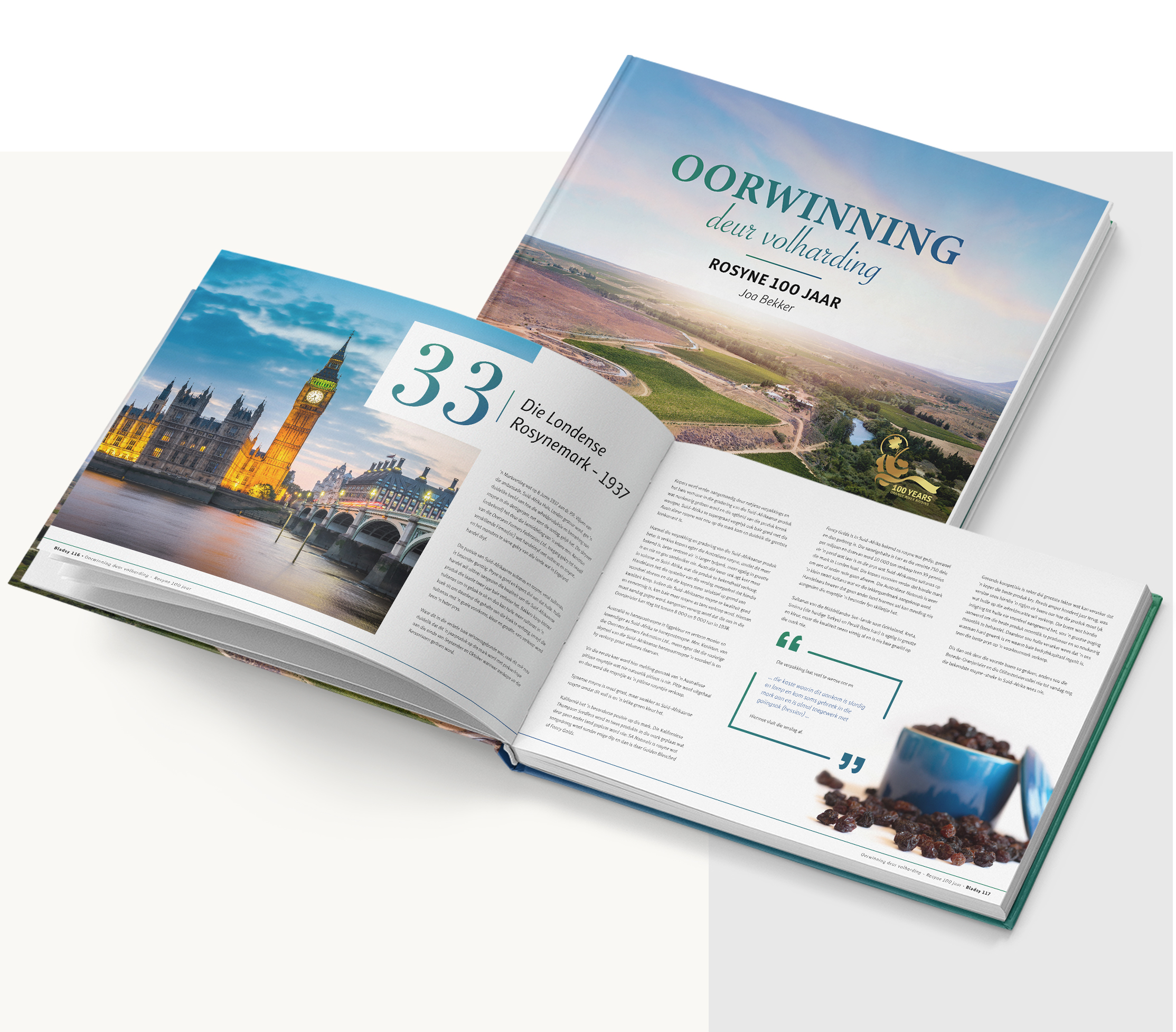Victory through perseverance
The recent publication which celebrates the past 100 years of raisin growing in South Africa, titled "Victory, through perseverance" says a lot about the hard work, determination, community driven and commitment of the South African farmer
(Former Chairperson of Raisins SA).
Today, both the Orange- and Olifants River create significant wealth to its communities. He further states that the success of the next 100 years, will be determined by our ability to work collectively to realise victory.

Victory, through perseverance
by Joa Bekker
The South African raisin industry is a proud and historic industry, from humble beginnings. Today the SA raisin industry is considered as a global player, producing the world's best raisins. SA is the world's 5th largest exporter of raisins, with more than 88% of its total crop earmarked for premium international markets.
The industry is well organised and represented through its commodity organization ‘Raisins South Africa’. In total 700 growers produces the world's finest product, processed, packaged and exported by 7 processing facilities.
- SA is internationally recognised for producing top quality raisins;
- Production is underpinned by strong agronomy and best practices;
- Annual raisin marketable product is approximately 90 000 dried tons, which will grow to 110 000 ton by 2025;
- South Africa is one of the only production origins that can produce all major (7) raisin product categories;
- Produced by approximately 700 growers;
- The industry has access to 7 world class processing facilities
- 88% of all products are destined for international market;
- Industry turnover estimated at R2bn, with its total economic impact estimated at R4bn provided the direct- and indirect value chain linkages.